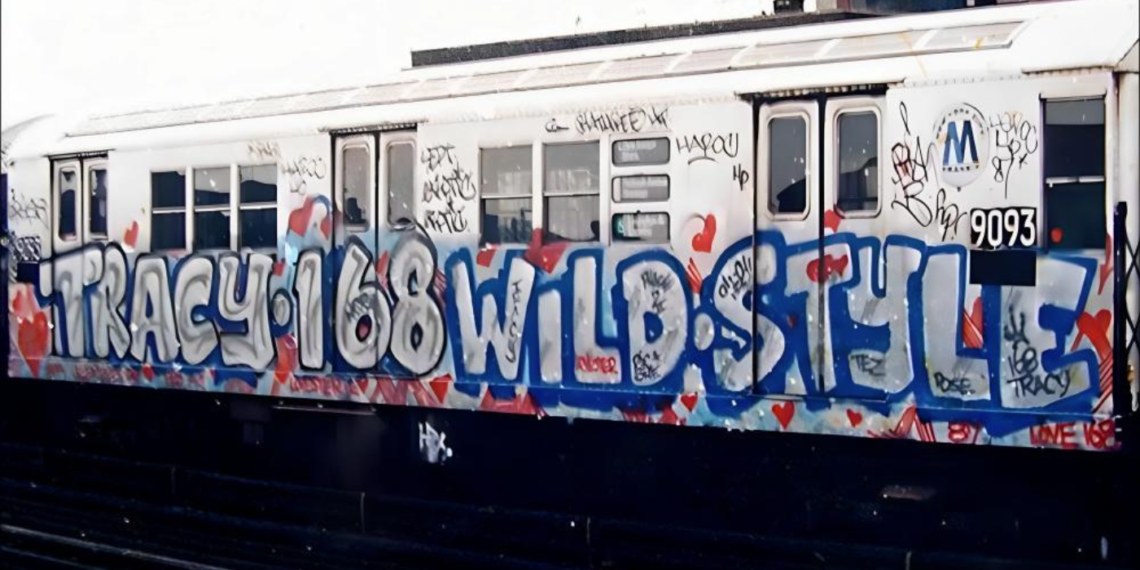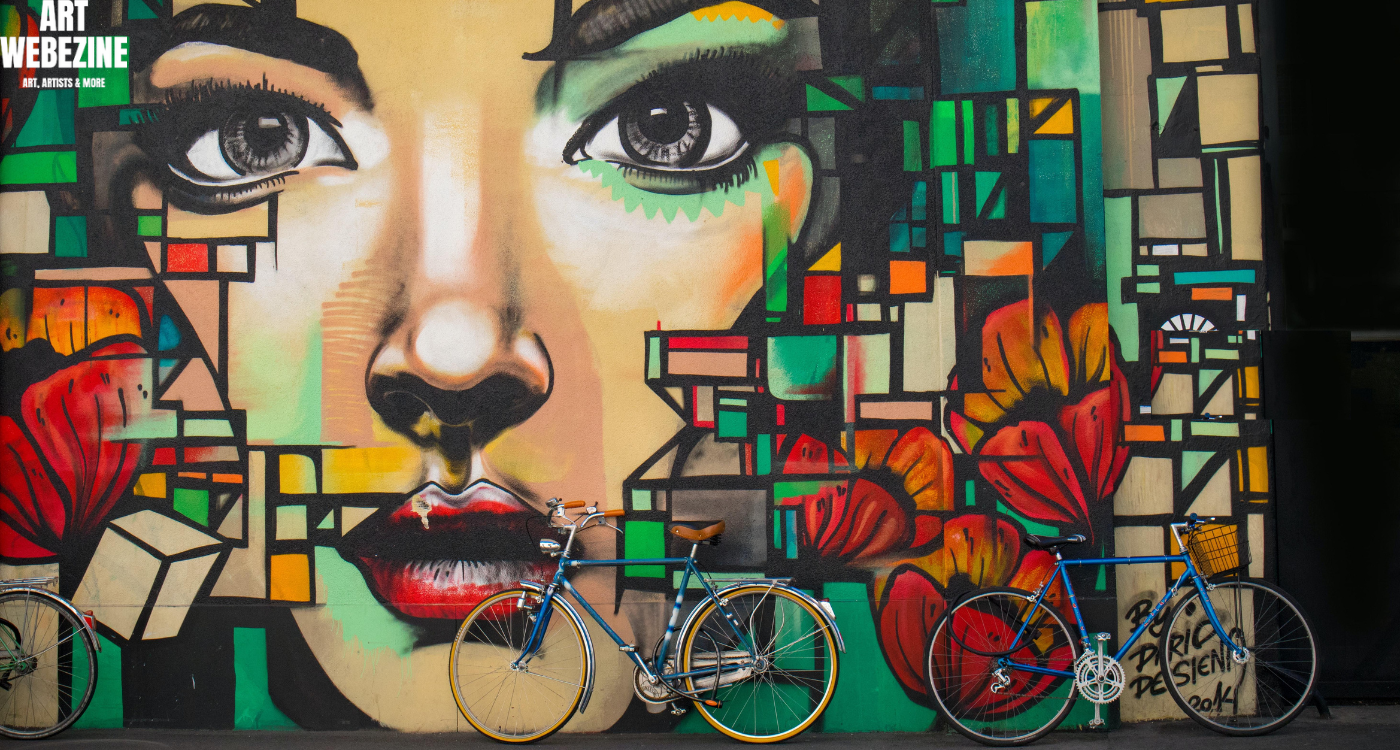Graffiti art is a visual art form that is created in public spaces, often without permission. It can be found on walls, bridges, and other surfaces, both urban and rural. It can take many different forms, from simple tags to complex murals. It can be used to express a wide range of ideas and emotions, from personal statements to political messages.
Graffiti art has evolved significantly over the years, from its humble beginnings as vandalism to its current status as a mainstream art form. This essay will explore the evolution of graffiti art, from its origins to its current state, and discuss its impact on society.
Uncovering the Roots: Exploring the Origins of Graffiti

Graffiti art has its roots in ancient times. Cave paintings and other forms of early art can be considered a form of graffiti. However, modern graffiti art is generally thought to have originated in New York City in the 1970s. At the time, young people from marginalized communities began using graffiti to express themselves and to challenge the status quo.
As the popularity of graffiti art grew, it became more visible in urban areas, with artists using spray cans and markers to create elaborate and colorful murals. However, it was still seen as a form of vandalism by many, with authorities cracking down on graffiti artists and imposing fines and even jail time for those caught in the act.
One of the most famous early graffiti artists was Taki 183. Taki began writing his name on subway trains in New York City in the early 1970s. His work quickly inspired other young people to start writing graffiti, and the movement quickly spread throughout the city.
Evolution of Graffiti Styles
In the early days, graffiti was mostly limited to simple tags and slogans. However, as graffiti artists became more skilled and experienced, they began to develop new styles and techniques. Some of the most popular graffiti styles include:
- Tagging: Tagging is the simplest form of graffiti. It involves writing one’s name or initials on a surface.
- Throw-ups: Throw-ups are larger and more complex than tags. They often involve multiple colors and simple designs.
- Pieces: Pieces are the most elaborate form of graffiti. They are often large-scale murals that can take days or even weeks to complete.
In addition to these basic styles, graffiti artists have developed a wide range of other styles and techniques. Some graffiti artists use stencils or spray cans to create their work, while others use hand-painted designs. Graffiti art can also be combined with other art forms, such as painting, sculpture, and photography.
Despite the challenges faced by graffiti artists in the early days, the popularity of graffiti art continued to grow, with artists gaining recognition for their unique and often controversial work. In the 1980s, graffiti art began to gain acceptance in the art world, with many galleries and museums showcasing the work of graffiti artists.
Graffiti art also began to evolve in terms of style and technique, with artists using new mediums and tools to create their work. It became more intricate and detailed, with artists using stencils, wheatpaste, and other techniques to create their designs.
As graffiti art gained more mainstream acceptance, it also began to move beyond its urban roots. Graffiti artists began to create murals and installations in galleries, museums, and public spaces, bringing their art to a wider audience.
Graffiti Culture: From Vandalism to Vibrant Community
Graffiti art has come a long way in its evolution. From its roots in vandalism, it has transformed into a respected art form as of 2023. But it is more than just visual expression; it’s deeply intertwined with a vibrant culture. Graffiti artists, once associated with vandalism, have shifted their focus, forming crews and working together to create powerful murals and graffiti pieces. This transformation signifies the evolution of graffiti art from its rebellious origins.
Graffiti culture is not only about the art but also about the values and traditions it represents. Artists in this culture, while still recognizing their roots in vandalism, now prioritize community and collaboration. They join forces to create stunning graffiti pieces, showcasing the evolution of graffiti art as a form of artistic expression that challenges the status quo.
One of the core values within graffiti culture is its sense of community. Graffiti artists have harnessed the power of graffiti art to connect with one another and build a tight-knit community. While vandalism was once associated with their work, today, they use it to challenge perceptions and express their creativity.
The evolution of graffiti art from its earlier days of vandalism to the vibrant culture it is today is a testament to the power of artistic transformation. Graffiti art has found a place in the mainstream, and its cultural significance cannot be overlooked in 2023.
Exploring the Fine Line: Vandalism vs. Art

The debate over whether graffiti art is vandalism or art has been ongoing for decades. On the one hand, graffiti is often created without permission and can damage property. On the other hand, many people believe that graffiti is a form of artistic expression and can be used to beautify public spaces.
Arguments in favor of graffiti art as art:
- Graffiti can be used to express creativity and individuality.
- Graffiti can be used to communicate social and political messages.
- Graffiti can add beauty and vibrancy to public spaces.
- Graffiti can be a way for people to reclaim public spaces that have been taken over by advertising or corporate interests.
Arguments against graffiti art as vandalism:
- Graffiti can damage property and cause financial losses for property owners.
- Graffiti can be unsightly and make public spaces feel unsafe.
- Graffiti can be used to promote gang activity or other illegal activities.
- Graffiti can be offensive and disrespectful to the community.
Ultimately, whether or not graffiti art is considered vandalism or art is a matter of personal opinion. There are valid arguments to be made on both sides of the debate.
In recent years, there has been a growing acceptance of graffiti art as a legitimate art form. Many cities now have graffiti parks and galleries where artists can legally display their work. Graffiti art has also been featured in museums and galleries around the world.
However, it is still considered to be vandalism in many places. Graffiti artists can be fined or even jailed for their work. It is important to note that even if graffiti art is considered to be vandalism, it is still protected by the First Amendment in the United States. This means that the government cannot arrest or prosecute graffiti artists simply for expressing themselves.
The debate over it is likely to continue for many years to come. However, there is no doubt that it is a powerful and influential art form. Graffiti artists have used their work to challenge the status quo, to raise awareness of social and political issues, and to create a sense of community.
Graffiti Art in 2023
Today, graffiti art is a global phenomenon. It can be found in cities all over the world. Graffiti artists continue to push the boundaries of the art form and to develop new styles and techniques. It is now a vibrant and respected art form that enjoys mainstream acceptance.
Some of the most famous graffiti artists in the world today include:
- Banksy
- Shepard Fairey
- Keith Haring
- Jean-Michel Basquiat
- Futura 2000
These artists have used their work to raise awareness of social and political issues, and to inspire people all over the world.
Conclusion
The evolution of graffiti art has been remarkable. From its humble beginnings as vandalism, graffiti art has become a mainstream art form with its own unique styles, techniques, and themes. Graffiti artists use their work to express themselves, to challenge the status quo, and to create a sense of community.
It has had a significant impact on society. It has helped to create a new visual language that is used by people all over the world. It has also helped to empower marginalized communities and to give them a voice.
The future of graffiti art is bright. Graffiti artists continue to innovate and to develop new styles






